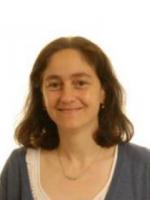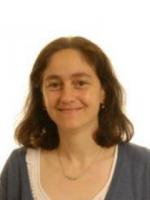Introduction
Achieving Good Ecological Status of inland waters under the European Water Framework Directive 2000 remains a major challenge in Scotland and throughout Europe. Furthermore, future environmental change is likely to have significant, but so far largely unquantified, impacts on Scotland’s water resources, both in terms of quality and quantity. Therefore, this project aims to address a range of important current environmental challenges relating to water quality and flow management in running waters under projected scenarios of environmental change. These include evaluation of extreme events such as floods and droughts and management of water quality to improve the evidence base of observed and modelled data on water quantity (floods and droughts, morphology) and quality (sediments, nutrients, pathogens and emerging contaminants) and contribute to the attainment of water quality and flow management objectives by environmental managers, regulators and policymakers.
Aim of Research
To support a range of Scottish policy priorities These include:
1) Flooding e.g. helping local authorities incorporate uncertainty into Flood Risk Management (FRM) plans; meeting the requirements of the Floods Directive (FD); 2) Water quality e.g. providing evidence for the Nitrates Directive (ND) review; informing regulation of shellfish and bathing water protected areas; reducing water treatment costs through improved catchment management; and meeting the requirements of the Drinking Water Directive (DWD) and WFD.
The project will address questions such as: What changes may take place in the future, where and why? What determines sensitivity, resilience and response to change? Can we detect change? What statistical methods are appropriate? Can we separate the effects of policy interventions from other factors? What management approaches are effective in controlling water quantity and quality at catchment scale? How might this change in the future? What are the key uncertainties and how do they affect decision making?
A range of models and data analysis tools are being developed to characterise Scotland’s present-day water resources (quantity and quality), including any existing trends, and improve our understanding of how these may change in the future. Possible effects of land use and climate change on Scotland’s water resources will be considered to help to define limits for the fair and sustainable use of natural assets such as water, land, energy and nutrients (e.g. nitrogen and phosphorus).
Progress
2021 / 2022
A risk-based phosphorus pollution model based on Bayesian Belief Networks (BBN) was completed and a manuscript has been submitted. The model was discussed with SEPA who are currently exploring adopting this modelling approach for operational needs. A simple web application for sharing BBN models with stakeholders has been developed. FIO data has been collated, microbial source tracking in two study catchments has been completed and a statistical analysis was finalised. The GAM model showed that FIOs, including the markers for human and ruminant sources, were influenced by precipitation and discharge, and correlated well with other indicators of water quality including tryptophan, fulvic acid and DOC. Novel statistical modelling tools have been explored, including issues related to Bayesian Belief Networks, the application of neural networks to temperature modelling, emulation of process-based water quality model Simply P, application of Markov auto-regressive models to turbidity data and novel tools for the study of trends in river discharge.
Highlights:
- Effective nutrient pollution mitigation measures require an understanding of spatiotemporal controls on water quality: This research published in Water Resources Research, proposed a new, reproducible, classification of concentration-discharge (c-Q) relationships, that adds value to the regulatory water quality monitoring data. The approaches enable the characterization of processes and best management practices for a broader range of catchments subject to regulatory surveillance.
- New approach for analysing stream turbidity data (proxy for suspended sediment and pollution) is tested: A turbidity time series dataset recorded every 15 minutes in the Wemyss catchment (north-east Scotland) for over a year was analysed, along with two explanatory variables (stage height and rainfall). Turbidity time series that are complex cannot be tackled by traditional simple models. Thus, we developed a novel Bayesian hierarchical model in the class of Markov switching autoregression models. This represents a valuable new approach to analyse the temporal dynamics of turbidity in streams and has the potential to be applied more widely to in-situ sensor applications.
- Water quality implications of the EU Green Deal reviewed: The opportunities of the proposed EU Green Deal for meeting the water quality objectives of the Water Framework Directive (WFD) in agricultural landscapes was assessed in a recent review undertaken by SEFARI scientists in collaboration with European researchers. It is suggested that the reliance on the Common Agricultural Policy poses a risk to meeting water quality improvement objectives. To meet WFD objectives, it is argued that a range of new strategies for understanding and solving water quality problems, such as better integration of the EU’s strategies and scientific evidence, are required.
2020 / 2021
A draft web interface to explore estimated trends in river discharge was produced and an updated assessment of groundwater nitrate pollution was provided to SEPA, using the new emulator. Further model testing of a log jam was undertaken using a new laboratory flume-based approach applied by other scientists and showed that the new approach has promise to better predict the impact of log jams on water flow. Scientific publications were published, including on the role of sediments in controlling dissolved reactive phosphorus release in rivers. A paper using an extended statistical modelling application of multivariate time series, based on a strategy developed in the previous years, has been submitted to the Journal of Statistical Computation and Simulation. The risk-based phosphorus pollution model was applied in a CREW septic-tank project that was highly appreciated by SEPA and led to productive international collaborations. A model for estimating the spatiotemporal variability of pesticide concentrations and loads was completed and the relationship between faecal pollution, nutrient enrichment and antimicrobial resistance genes was examined in two study catchments in south-west Scotland.
Highlights:
- A draft web interface to explore estimated trends in river discharge has been produced using R Shiny, and the associated R code revised so that the trends analysis can regularly be updated as new discharge data become available. User guidance has been produced for both the Shiny interface and the R package. The format of the R package and Shiny interface was based upon an initial discussion with SEPA regarding requirements, and the resulting code and documentation have been sent to SEPA for feedback and are likely to be revised in future based on this feedback.
- A new risk-based decision support tool reveals the land use factors that determine phosphorous pollution risk. Phosphorus pollution remains a major cause of surface water quality failures, requiring evidence-based decision-making about the effectiveness of mitigation measures and their spatial targeting. The tool was presented at the European Geophysical Union Congress and will help to target mitigation measures in high risk areas. Results from a sub-model related to the risk of phosphorus pollution from septic tanks have been integrated with the SEPA modelling platform SAGIS at a Scotland-wide scale through a CREW-funded project.
- New research on diffuse pollution modelling: International collaboration has built on past SRP work, to produce two papers (available here and here) published in special journal issues that help to advance the science on diffuse pollution modelling to inform water quality policy and management. Increased use of Bayesian network (BN) models, which are a tool for probabilistic and causal modelling, have been shown to improve environmental risk assessments for toxicology and water quality.
- A model estimating spatiotemporal variability of pesticide concentrations and loads was developed for the Ugie catchment and significant downward trends in loads and concentrations were estimated for several pesticides. The trends were strongly correlated with changes in usage regulation and provided evidence that the land management scheme introduced in 2011 has worked well.
- Modelling of antimicrobial resistance genes in two catchments in SW Scotland showed that season and environmental variables were more strongly associated with gene abundance than microbial community composition. The seasonal variability of AMR genes found in the two study catchments may be significant for future design of AMR monitoring schemes.
2019 / 2020
Development of statistical tools for the analysis of multivariate time series analysis, discharge trends and emulation of complex models has continued. A review of approaches to modelling the effects of log jams on water flow was published and model testing is continuing. Previous trend analyses of extreme river discharge were extended, as requested by SEPA, to assess trends in peaks over a high threshold (in addition to annual maxima) and to consider trends in low/high flows. A manuscript on the analysis of concentration-discharge relationships to characterise the response of Scottish catchments to pollution has been completed and a risk-based model of phosphorus pollution is being tested in further river catchments to inform SEPA septic tank management priorities. The analysis of historical application records linked to observed pesticide concentrations in the River Ugie demonstrated the importance of understanding pesticide sources when modelling pollution at a catchment scale. Monitoring of antibiotic resistance genes in two agricultural catchments in SW Scotland showed a clear seasonal influence, with weak links to anthropogenic activities, suggesting that seasonal changes in antibiotic gene abundance may be caused by inherent changes in the microbial community.
Highlights:
- Modelling effects of in-stream wood: A recent study reviewed approaches to modelling the hydrological and hydraulic effects of naturally formed or deliberately placed in-stream large wood, for flood risk management or river restoration. It was concluded that validation, testing different representations for different purposes and scales, alongside better accounting for model input uncertainty, are needed to improve confidence in models.
- Phosphorus risk modelling: Results of phosphorus risk modelling were presented at the SAGES ‘Global Climate Challenges for a Blue Green Economy’ conference (Edinburgh, 27-28 Nov 2019). SEPA have expressed an interest in extending this modelling approach to ecosystem services modelling in the Eden catchment as part of ‘One Planet Choices’ project.
- Collaboration strengthened with applied research in Ireland. SEFARI researchers presented multiple aspects of RESAS-funded research at the Catchment Science 2019 Conference (Wexford, November 2019). This included modelling of phosphorus sources and mitigation, the F-MAPT tool to enable placement of flood mitigation measures, riparian management, water payment for ecosystem services and soil erosion work. Researchers are working closely with the Teagasc Institute and the Irish EPA in riparian and Natural Flood Management (NFM) allied research projects with mutual benefit for the land.
2018 / 2019
An analysis of trends over time in discharge data for catchments throughout Scotland has been undertaken and a statistical methodology was developed to produce a holistic assessment of uncertainty when assessing trends in peak discharge. This approach was used to assess the impact of uncertainty upon the power to detect trends in high river flows over time, when estimating river flows from river stage measurements (a routinely used method). Analysis of national-scale water quality data from the SEPA Harmonised Monitoring Programme has been undertaken to further the understanding of catchment water quality responses to river flow. New models of water pollution from phosphorus and pesticides are being developed, including the development of a catchment-scale prototype for the Lunan catchment, and experimental data is being collected to understand the temporal variability of the presence of anti-microbial resistance genes in two SW Scotland river catchments.
Highlights:
- Knowledge exchange on our Phosphorus pollution modelling: a special session on modelling was led by Miriam Glendell at the European Geophysical Union meeting (Vienna, April 2019) and an international review paper on ‘Challenges of Reducing Phosphorus Based Water Eutrophication in the Agricultural Landscapes of Northwest Europe’ has been published in Frontiers in Marine Science. A seminar was given at Teagasc in Ireland in May by a SEFARI scientist and a small contract undertaking similar work for the Irish Agricultural Catchments Programme was secured.
- Expansion of research: wider modelling is being supported by numerous collaborations (including an international team Marie-Curie Training Network bid submitted; new water quality sensor funding won; successfully awarded EPSRC project on the river Ganges) and the awarding of a Walsh Fellowship PhD studentship proposal (jointly with Teagasc, BIOSS, Uni of Reading) to further develop these modelling approaches, showing the growing impact of our P modelling approach.
2017 / 2018
Engagement with stakeholders, especially SEPA, to understand the regulatory modelling needs at a national scale has continued. Significant progress has been made in the development and application of modelling tools to inform policy, for example: examination of trends in extreme flow events; review of natural flood management modelling approaches (leaky barriers); development of a new decision support tool to inform the management of phosphorus pollution in Scottish streams and continued gathering of pesticide and anti-microbial resistance data.
Highlights:
- Update and dissemination on NIRAMS (Nitrogen Risk Assessment Model for Scotland): The model has been enhanced to evaluate the impact of livestock being kept indoors or outdoors in winter. Results from the model are being used in a report by SEPA to the Scottish Government on the Nitrate Directives Review. Papers were presented at the German annual meeting of hydrologists “Tag der Hydrologie” and the European Geoscience Union General Assembly in spring-summer 2017.
- New national phosphorus model: A new phosphorus delivery and mitigation model is being developed using a Bayesian modelling framework to encompass formal evidence of catchment processes and expert consensus (e.g. mitigation effectiveness). This is being co-constructed with SEPA for design and validation.
- Calibrations of sensor-based methods for water quality monitoring: Work on using sensors for water quality assessment, involving SEPA and Scottish Water, has been disseminated to scientific and industry audiences. The work involves calibration of in situ turbidity and organic matter sensors for river sediment, P concentrations and dissolved organic matter interactions with drinking water treatment. A science paper on turbidity sensing has been published with an associated presentation at Water Scotland on 7th December 2017.
2016 / 2017
During the year, extensive alignment has taken place with the continuing national lead in implementation of of water quality modelling by SEPA. This has focussed on three main areas: the refinement of modelling tools for the EU review of the Nitrate Vulnerable Zones; integration of a number of RD work areas contributing to phosphorus source behaviour and waterbody impacts; and a partnership on evidence gathering for pathogen environmental behaviour in SEPA's new intensive evidence gathering sites in SW Scotland. Additionally, technical development has continued with statistical methods on spatial and time-series data and model structures.
Highlights:
- Research from the programme has provided evidence on diffuse pollution control which has informed a stakeholder group co-ordinated by Peter Pollard at SEPA. In addition, further collaboration with SEPA on nitrate modelling is supporting the 2017 review of Nitrate Vulnerable Zones.
- A paper on how to reduce uncertainties in data derived from networks of sensors in rivers (e.g. river flow, temperature) and remote-sensed data, using improved statistical covariance structure methods has been submitted.
Future Activities
Future work will build on research achievements from years 1-6 of the research programme. We will develop the application of risk-based modelling using Bayesian Belief Networks to water resources and water quality challenges, specifically the impact of drought, anti-microbial resistance genes and emerging water contaminants on water resources under future environmental change. The evaluation of spectroscopic methods for improved monitoring of a range of pollutants will be continued and refined, including pharmaceuticals and emerging contaminants, by investigating the applicability of portable surface-enhanced Raman scattering (SERS) to detect pesticides and pharmaceuticals in ppm/ppb levels in water. Probabilistic modelling of groundwater nitrate contamination under future change will be refined, as will be the work on the simplification of complex water quality models using emulation.
Selected Outputs
2016/17
- Gray, D., Lumsdon, D.G., Hillier, S. (2016). Effect of pH on the cation exchange capacity of some halloysite nanotubes. Clay Minerals 51 (3), 373-383
- Menezes-Blackburn, D., Zhang, H., Stutter, M., Giles, C.D., Darch, T., George, T.S., Shand, C., Lumsdon, D., Blackwell, M., Wearing, C., Cooper, P., Wendler, R., Brown, L., Haygarth, P. (2016). A holistic approach to understanding the desorption of phosphorus in soils. Environmental science & technology, Volume 50, Issue 7, pp3371-3381.
- Pohle, I., Glendell, M., Stutter, M., Helliwell, R.C. (2017) An approach to predict water quality in data-sparse catchments using hydrological catchment similarity. Poster presented at the annual meeting of German hydrologists, Trier, March 2017; and EGU congress in Vienna, April 2017.
- Pohle, I., Glendell, M., Glair, J., Sample, J. (2017) Changes in nitrate concentrations in Scottish catchments – investigating the influence of climate and land use drivers by simulation with NIRAMS II’ Poster presented at EGU congress in Vienna, April 2017.
2017/18
- Spezia, L. (2018). Modelling covariance matrices by the trigonometric separation strategy with application to hidden Markov models. Test. 28 (2), 399-422.
- Pohle, I., Glendell, M., Stutter, M. (2018) ‘Identifying catchment typologies by analysing concentration-discharge relationships in Scottish catchments’. Poster presented at EGU General Assembly, Vienna April 2018.
- Glendell, M. et al.(2018) ‘Modelling of phosphorus pollution risk to watercourses in Scotland using Bayesian Belief Networks’. Poster presented at EGU congress in Vienna, April 2018.
2018/19
- Birkel, C., Helliwell, R., Thornton, B., Gibbs, S., Cooper, P., Soulsby, C., Tetzlaff, D., Spezia, L., Esquivel-Hernández, G., Sánchez-Murillo, R., Midwood, A.J. (2018) Characterization of surface water isotope spatial patterns of Scotland. Journal of Geochemical Exploration, 194, 71-80.
- Bol, R.; Gruau, G.; Mellander, P.E.; Dupas, R.; Bechmann, M.; Skarbøvik, E.; Bieroza, M.; Djodjic, F.; Glendell, M.; Jordan, P.; Van der Grift, B.; Rode, M.; Smolders, E.; Verbeeck, M.; Gu, S.; Klumpp, E.; Pohle, I.; Fresne, M.; Gascuel-Odoux, C. 'Challenges of reducing phosphorus based water eutrophication in the agricultural landscapes of Northwest Europe.' Frontiers in Marine Science, 5, Article No. 276.
- Pohle, I., Glendell, M., Baggaley, N., Stutter, M. 2019 A classification scheme for concentration-discharge relationships based on long-term low-frequency water quality data presented at the European Geoscience Union General Assembly in April 2019.
2019/20
- Addy, S.; Wilkinson, M.E. (2019) Representing natural and artificial in-channel large wood in numerical hydraulic and hydrological models, Wiley Interdisciplinary Reviews - Water, 6, Article No. e1389.
- Blöschl, G. et al. (2019) Twenty three Unsolved Problems in Hydrology (UPH) - a community perspective. Hydrological Sciences Journal, 64, 1141-1158.
- Glendell, M., Palarea‐Albaladejo, J., Pohle, I., Marrero, S., McCreadie, B., Cameron, G. and Stutter, M., (2019) 'Modeling the Ecological Impact of Phosphorus in Catchments with Multiple Environmental Stressors. Journal of Environmental Quality, Special Issue: 'Celebrating the 350th Anniversary of discovering phosphorus', 48 (5).
- Donnelly, D. (2020) An Assessment of the Performance of the PLUS+ Tool to Evaluate WFD Compliance in Scottish Standing Waters. International Journal of Environmental Research and Public Health, 17(2), 391.
- Hashemi, F., Pohle, I., Pullens, J. W. M., Tornbjerg, H., Kyllmar, K., Marttila, H., et al. (2020). Conceptual Mini-Catchment Typologies for Testing Dominant Controls of Nutrient Dynamics in Three Nordic Countries. Water, 12(1776), 1–17. Paper in collaboration with researchers in Denmark, Sweden and Finland.
2020/21
- Stutter, M., Graeber, D., Weigelhofer, G. 2020 Available Dissolved Organic Carbon Alters Uptake and Recycling of Phosphorus and Nitrogen from River Sediments. Water 12(2) 3321
- Bieroza, M.; Dupas, R.; Glendell, M.; McGrath, G.; Mellander P.E. 2020 Hydrological and chemical controls on nutrient and contaminant loss to water in agricultural landscapes. Water, 12, Article No. 3379.
- Moe, J.S., Carriger, J.F., Glendell, M. 2020 Increased Use of Bayesian Network Models has Improved Environmental Risk Assessments. Integrated Environmental Assessment and Management 17(1): 53-61
2021/22
- Bieroza, M.Z.; Bol, R.; Glendell, M. 2021 What is the deal with the Green Deal: Will the new strategy help to improve European freshwater quality beyond the Water Framework Directive? Science of the Total Environment, 791, Article No. 148080.
- Pohle, I, Baggaley, N, Palarea-Albaladejo, J, Stutter, M., Glendell, M. 2021 A Framework for Assessing Concentration-Discharge Catchment Behavior from Low-frequency Water Quality Data. Water Resources Research
- A new tool for sharing of risk-based Bayesian Belief Network models with stakeholders, an example app: https://qqpvju-madstroldborg.shinyapps.io/BBN_shiny_app_fin/





